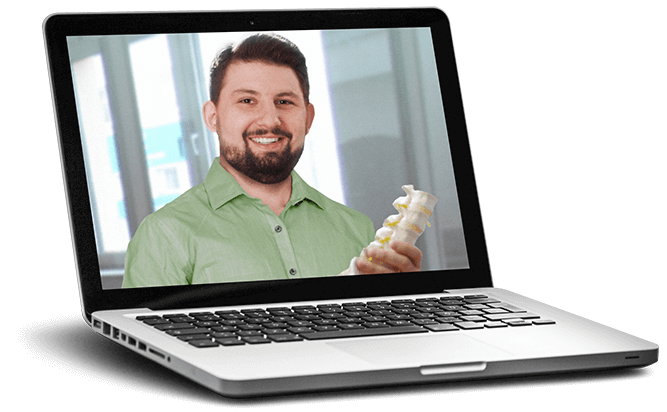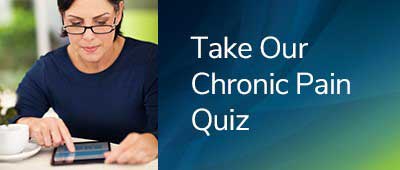Science Behind Laser Therapy

When people first hear of laser therapy, they are often skeptical. Many patients tilt their head to the side, lift an eyebrow and give me the “look.” You know the one. The one that says, “yeah right.”
I get it.
It can be hard to believe that shining a laser light onto the surface of your skin can heal years of chronic pain. Yet, it is possible. In fact, high intensity laser therapy has already helped thousands of people all over the world recover from injuries, regain mobility, and live a life free from chronic pain. This article will help you to understand the science behind the healing properties of laser therapy for pain.
How Lasers Promote Healing – the Power of Light
The example I use most often when introducing laser therapy to patients is drawing a parallel between laser therapy and photosynthesis. Most of us learned about photosynthesis in elementary school science class. You might not fully remember the details of the chemical process that occurs when a plant is exposed to sunlight, but you do know (and believe) that sunlight enables a plant to grow and thrive.
Put simply, during photosynthesis, a plant converts the light energy from the sun into chemical energy to fuel growth.

Though humans don’t photosynthesize, there are other examples of chemical reactions within our bodies fueled by light energy.
When we are exposed to ultraviolet rays from the sun, a few things occur. Skin cells produce melanin. Melanin absorbs UV light and acts as a natural sunscreen. When you see a suntan, you’re seeing the increased production of melanin. However, overexposure to UV rays can result in a different chemical reaction – the toxic reaction that we know as sunburn.
Another chemical reaction that occurs when we are exposed to sunlight is not so easy for us to detect. Skin cells also convert the ultraviolet light energy from the sun into Vitamin D3. Less exposure to sunshine in winter months results in lower levels of Vitamin D in our bodies. This lack of Vitamin D is thought to be linked to a variety of conditions including: Seasonal Affective Disorder, depression, and increased risk for respiratory illnesses, such as the flu.
Healing lasers work in a similar manner. When exposed to specific levels of infrared laser light, your body converts that light energy into chemical energy to fuel cell growth and healing.
It’s not a matter of “believing” that laser therapy delivers healing and pain relief any more than “believing” in photosynthesis or sunburns. It’s a matter of understanding the science behind this effective chronic pain treatment. For those of you who want to dive more deeply into this topic, read on.
Laser Therapy or Photobiomodulation?
Laser therapy has gone by a variety of names since it was first introduced in Europe in the 1960s: laser therapy, low level laser therapy (LLLT), low power laser therapy, high intensity laser therapy (HILT), high power laser therapy, and biostimulation, to name a few. Most recently, photobiomodulation (PBM) has become the preferred term among scientists.
If we break down the term “photobiomodulation,” we can get an idea of why it is the preferred name. “Photo” comes from the Greek word for light. “Bio” is also from the Greeks. “Bios” means the course of human life. “Modulation” which has its roots in Latin, means to alter, change, or adapt.
If you put it all together, it roughly translates to “light that changes life”.
Scientifically speaking, “changes life” refers to biochemical changes within the cells of the body. But as we have seen with our patients, the healing effects of laser therapy can, in fact, be life changing.
At InMotion Pain Solutions’ laser pain center, we’ve found that our patients best identify with the term high intensity laser therapy.
What’s the Difference Between High Intensity Laser Therapy and Low Level Laser Therapy?
Quite simply, the difference between High Intensity Laser Therapy and Low Level Laser Therapy is the wattage, or power, of the lasers. A therapeutic laser with a wattage greater than 0.5 Watts (or 500 milliwatts) is considered a High Intensity Laser, or a Class IV laser. Anything 0.5 Watts or below, is a Low Level Laser, or a Class III laser.
Low Level Lasers are effective at treating surface injuries. However, deeper injuries and those associated with chronic pain, require more power. Higher wattages enable the laser light to deliver larger doses of light energy in less time. This enables the healing light to penetrate deeper below the surface of the skin to reach the cells. If the light does not reach the damaged cells, the laser cannot do its work.
Even within the High Intensity, or Class IV category, laser wattages can vary drastically. Most High Intensity Lasers used by clinicians are 10-watt lasers. At InMotion Pain Solutions in Cedar Rapids, we work with 2 different types of High Intensity Lasers. We have both 60-watt and 500-watt lasers. These are among the most powerful lasers on the market, enabling us to treat deeply rooted injuries and chronic pain.
Compare Pain Treatments
Medications? Injections? Surgery? InMotion Treatment?
Which is the best choice for you?
Get our side-by-side comparison to help you decide.
The Science Behind Laser Therapy
If you’ve never seen laser therapy in action, imagine a flash-light type device pointing at an area of the body (e.g. low back or knee). The visual is simple enough. But, a complex series of biochemical reactions occurs from this seemingly simple therapy.
When specialized laser light is shone over the targeted area, photons (tiny particles of energy) carry electromagnetic radiation to the cells. As these photons are absorbed by the cell, a series of photochemical reactions and biological changes occur. Here is a list of the many things photobiomodulation does within the human body:
- Increases cellular metabolism by stimulating Cytochrome C.
- ATP (adenosine triphosphate) production increases, providing increased cellular energy.
- Produces free nitric oxide (NO) and modulates reactive oxygen species (ROS) which causes expansion of blood vessels (vasodilation) to decrease swelling.
- Increases inflammatory mediators including macrophages, neutrophils, and lymphocytes to reduce swelling.
- Accelerates cellular reproduction and growth by starting DNA and RNA repairs within cells.
- Restores normal cellular function which can prevent cells from dying. This helps to speed the tissue repair process and reduces inflammation and edema.
- Stimulates release of endorphins and enkephalins to reduce pain.
- Improves vascular activity and increases the formation of new capillaries (angiogenesis) in damaged tissues. This increased blood flow enables the body to deliver oxygen and other nutrients to the treated area.
- Increases collagen production, which reduces internal scar tissue formation and softens existing scar tissue.
- Increases chondrocyte and collagen production to allow for improved cartilage deposits and enhanced joint function.
- Promotes neuronal sprouting and formation of myelin to enhance nerve regeneration and recovery.
- Resets chronic pain memory by acting as an analgesic that suppresses nerve signals and resets interneurons.
- Regenerates muscle tissue by repairing damaged muscle fibers and activating myogenic satellite cells.
There’s a lot of science in that list. It does, however, spell out the many biological changes that are induced by laser therapy. Let’s boil down all of that science into a short list of benefits of laser therapy.
Benefits of Laser Therapy or Photobiomodulation
We can’t sense or feel all of the biochemical changes that occur as a result of laser therapy. But we can certainly benefit from them. Here are some of the key benefits of laser therapy:
- Relieves pain
- Softens scar tissue
- Calms muscle spasms
- Resets the chronic pain cycle
- Reduces swelling
- Improves blood flow
- Calms muscle spasm
- Improves nerve function
- Speeds healing
Why Isn’t Laser Therapy Mainstream?
Good question. Why is it that you are likely just beginning to hear about laser therapy for pain? The fact of the matter is that photobiomodulation (PBM) has been studied since the 1960s and has been used in Europe since the 1970s.
But Western medicine can be slow to adopt new therapies.
It wasn’t until 2002 that the FDA cleared laser therapy in the US. Since then, extensive research has been done and advances are continually being made in the use of laser therapy for treating pain. It is now the therapy of choice for professional athletes seeking to recover from injuries, including those in the NBA, NFL, NHL, and Olympic athletes.
In fact, the exclusive protocols used at InMotion Pain Solutions’ laser pain center were originally developed to treat Olympic athletes and NFL players in Green Bay, Wisconsin. By adapting treatments once exclusively reserved for elite athletes, we have achieved remarkable outcomes for chronic pain.
→ Read More: 5 Things Everyone Should Know About Laser Therapy.

WATCH OUR
Free Online Webinar
- Understand Why Your Are in Pain
- Learn Why Other Treatments Haven’t Worked
- Discover Our New Approach to Pain Relief
No-Cost Consultations and Second Opinions
Now that you understand the science behind laser therapy, it is not so hard to believe this conservative approach can provide lasting healing for acute and chronic pain.
If you are interested in speaking to a doctor about your pain and how the treatment protocols at InMotion Pain Solutions may benefit you, we invite you to schedule a no-cost consultation with Dr. Ben Wyant. These appointments at our Cedar Rapids, Iowa clinic are no-risk and no-obligation for you. You can reach us by calling 319-200-1495 or contact us online.
Dr. Ben Wyant, D.C.
If this information was helpful, share it!
SOURCES:
How Lasers Work, American Society for Laser Medicine and Surgery. Retrieved from https://www.aslms.org/for-the-public/general-information/lasers-(general-overview)
The Science Behind How Laser Therapy Works. Light Force Medical. Retrieved from https://www.lightforcemedical.com/how-laser-therapy-works/
Low Level Laser Therapy retrieved from https://renudelaser.com.au/low-level-laser-therapy/



